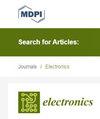Recent Progresses and Perspectives of UV Laser Annealing Technologies for Advanced CMOS Devices
IF 2.6
3区 工程技术
Q2 COMPUTER SCIENCE, INFORMATION SYSTEMS
引用次数: 1
Abstract
The state-of-the-art CMOS technology has started to adopt three-dimensional (3D) integration approaches, enabling continuous chip density increment and performance improvement, while alleviating difficulties encountered in traditional planar scaling. This new device architecture, in addition to the efforts required for extracting the best material properties, imposes a challenge of reducing the thermal budget of processes to be applied everywhere in CMOS devices, so that conventional processes must be replaced without any compromise to device performance. Ultra-violet laser annealing (UV-LA) is then of prime importance to address such a requirement. First, the strongly limited absorption of UV light into materials allows surface-localized heat source generation. Second, the process timescale typically ranging from nanoseconds (ns) to microseconds (μs) efficiently restricts the heat diffusion in the vertical direction. In a given 3D stack, these specific features allow the actual process temperature to be elevated in the top-tier layer without introducing any drawback in the bottom-tier one. In addition, short-timescale UV-LA may have some advantages in materials engineering, enabling the nonequilibrium control of certain phenomenon such as crystallization, dopant activation, and diffusion. This paper reviews recent progress reported about the application of short-timescale UV-LA to different stages of CMOS integration, highlighting its potential of being a key enabler for next generation 3D-integrated CMOS devices.先进CMOS器件紫外激光退火技术研究进展与展望
最先进的CMOS技术已经开始采用三维(3D)集成方法,实现了芯片密度的持续增加和性能的提高,同时减轻了传统平面缩放所遇到的困难。这种新的器件架构,除了需要努力提取最佳材料特性之外,还提出了减少CMOS器件中应用的工艺热预算的挑战,因此必须在不影响器件性能的情况下取代传统工艺。紫外激光退火(UV-LA)是解决这一要求的关键。首先,材料对紫外线的吸收非常有限,这使得表面局部热源的产生成为可能。其次,工艺时间尺度通常在纳秒(ns)到微秒(μs)之间,有效地限制了热在垂直方向上的扩散。在给定的3D堆栈中,这些特定功能允许在顶层中提高实际工艺温度,而不会在底层中引入任何缺点。此外,短时间尺度UV-LA在材料工程中可能具有一定的优势,可以对结晶、掺杂活化和扩散等现象进行非平衡控制。本文综述了短时间尺度UV-LA在CMOS集成不同阶段应用的最新进展,强调了其作为下一代3d集成CMOS器件的关键推动者的潜力。
本文章由计算机程序翻译,如有差异,请以英文原文为准。
求助全文
约1分钟内获得全文
求助全文
来源期刊

Electronics
Computer Science-Computer Networks and Communications
CiteScore
1.10
自引率
10.30%
发文量
3515
审稿时长
16.71 days
期刊介绍:
Electronics (ISSN 2079-9292; CODEN: ELECGJ) is an international, open access journal on the science of electronics and its applications published quarterly online by MDPI.
 求助内容:
求助内容: 应助结果提醒方式:
应助结果提醒方式:


